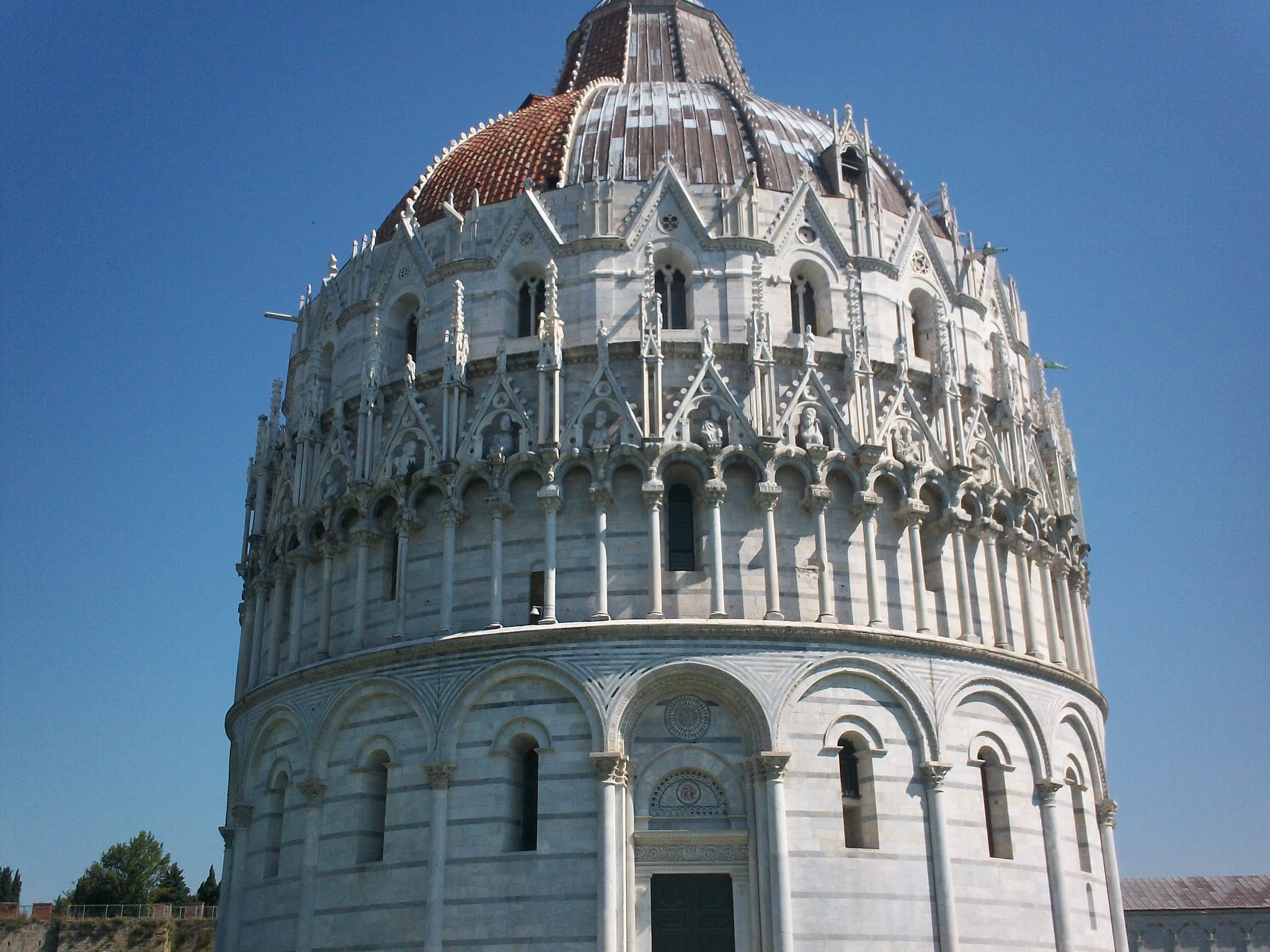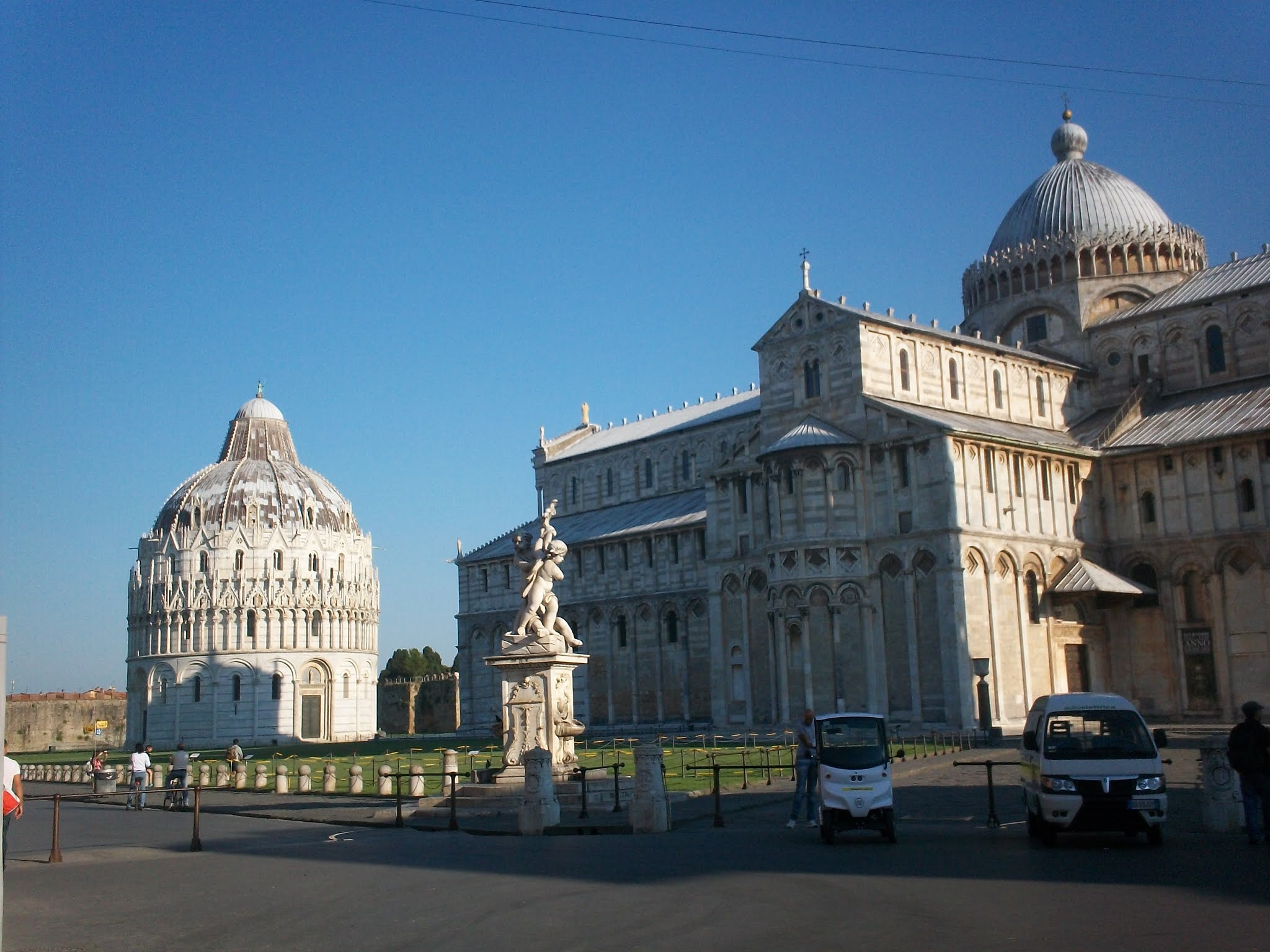Pantani Carpaticus - sunt un om cu o mare pofta de a descoperi viata si lumea din saua bicicletei. Am calatorit enorm in ultimii 20 de ani traind o viata intensa plina de aventura si adrenalina! Viata mea inseamna calatoria pe 2 roti, descoperirea naturii, intalnirea cu semenii si continua perfectionare a mea prin intermediul experientelor acumulate si a emotiilor traite! Pedalo ergo sum! Pedalez deci exist! Traiasca cicloturismul!
Totalul afișărilor de pagină
miercuri, 17 martie 2021
9- Grand bicycle tour in Italy from 2011 (Pisa - Piazza dei Miracoli)
It's time for me to discover one of the finest marvels of the whole world - The Piazza dei Miracoli.
The Piazza dei Miracoli (Italian: [ˈpjattsa dei miˈraːkoli]; English: Square of Miracles), formally known as Piazza del Duomo (English: Cathedral Square), is a walled 8.87-hectare area located in Pisa, Tuscany, Italy, recognized as an important centre of European medieval art and one of the finest architectural complexes in the world. Considered sacred by the Catholic Church, its owner, the square is dominated by four great religious edifices: the Pisa Cathedral, the Pisa Baptistry, the Campanile, and the Camposanto Monumentale (Monumental Cemetery). Partly paved and partly grassed, the Piazza dei Miracoli is also the site of the Ospedale Nuovo di Santo Spirito (New Hospital of the Holy Spirit), which houses the Sinopias Museum (Italian: Museo delle Sinopie) and the Cathedral Museum (Italian: Museo dell'Opera del Duomo).
The name Piazza dei Miracoli was coined by the Italian writer and poet Gabriele d'Annunzio who, in his novel Forse che sì forse che no (1910), described the square as the "prato dei Miracoli", or "meadow of miracles". The square is sometimes called the Campo dei Miracoli ("Field of Miracles"). In 1987, the whole square was declared a UNESCO World Heritage Site.
Plenty of tourists roaming around.
The Baptistery, dedicated to St. John the Baptist, stands opposite the west end of the Duomo. The round Romanesque building was begun in the mid 12th century: 1153 Mense August fundata fuit haec ("In the month of August 1153 was set up here..."). It was built in Romanesque style by an architect known as Diotisalvi ("God Save You"), who worked also in the church of the Holy Sepulchre in the city. His name is mentioned on a pillar inside, as Diotosalvi magister. the construction was not, however, finished until the 14th century, when the loggia, the top storey and the dome were added in Gothic style by Nicola Pisano and Giovanni Pisano.
It is the largest baptistery in Italy, with a circumference measuring 107.25 m. Taking into account the statue of St. John the Baptist (attributed to Turino di Sano) atop the dome, it is even a few centimetres taller than the Leaning Tower.
The portal, facing the façade of the cathedral, is flanked by two classical columns, while the inner jambs are executed in the Byzantine style. The lintel is divided into two tiers, the lower one depicting several episodes in the life of St. John the Baptist, and the upper one showing Christ between the Madonna and St. John the Baptist, flanked by angels and the evangelists.
The immensity of the interior is overwhelming, but it is surprisingly plain and lacking in decoration. It has notable acoustics also.
The octagonal baptismal font at the centre dates from 1246 and was made by Guido Bigarelli da Como. The bronze sculpture of St. John the Baptist at the centre of the font is a remarkable work by Italo Griselli.
The pulpit was sculpted between 1255-1260 by Nicola Pisano, father of Giovanni Pisano, the artist who produced the pulpit in the Duomo. The scenes on the pulpit, and especially the classical form of the naked Hercules, show at best Nicola Pisano's abilities as the most important precursor of Italian renaissance sculpture by reinstating antique representations. Therefore, surveys of the Italian Renaissance usually begin with the year 1260, the year that Nicola Pisano dated this pulpit.
Some details of baptistery.
The heart of the Piazza del Duomo is the Duomo, the medieval cathedral of the Archdiocese of Pisa, dedicated to Santa Maria Assunta (St. Mary of the Assumption). The cathedral has two aisles on either side of the nave. The transept consists of three aisles. The church is known also as the Primatial, the archbishop of Pisa being a Primate since 1092.
Its construction began in 1064 by the architect Buscheto. It set the model for the distinctive Pisan Romanesque style of architecture. The mosaics of the interior, as well as the pointed arches, show a strong Byzantine influence.
The façade, of grey marble and white stone set with discs of coloured marble, was built by a master named Rainaldo, as indicated by an inscription above the middle door: Rainaldus prudens operator.
The cathedral, the Duomo is placed between the baptistery and the leaning tower.
The campanile (bell tower), commonly known as the Leaning Tower of Pisa, is located behind the cathedral. The last of the three major buildings on the piazza to be built, construction of the bell tower began in 1173 and took place in three stages over the course of 177 years, with the bell-chamber only added in 1372. Five years after construction began, when the building had reached the third floor level, the weak subsoil and poor foundation led to the building sinking on its south side. The building was left for a century, which allowed the subsoil to stabilise itself and prevented the building from collapsing. In 1272, to adjust the lean of the building, when construction resumed, the upper floors were built with one side taller than the other. The seventh and final floor was added in 1319. By the time the building was completed, the lean was approximately 1 degree, or 80 cm (2.5 feet) from vertical. At its greatest, measured prior to 1990, the lean measured approximately 5.5 degrees. As at 2010, the lean was reduced to approximately 4 degrees.
The tower stands approximately 60 m high, and was built to accommodate a total of seven main bells, cast to the musical scale:
L'Assunta, cast in 1654 by Giovanni Pietro Orlandi, weight 3,620 kg (7,981 lb)
Il Crocifisso, cast in 1572 by Vincenzo Possenti, weight 2,462 kg (5,428 lb)
San Ranieri, cast in 1719–21 by Giovanni Andrea Moreni, weight 1,448 kg (3,192 lb)
La Terza, the first small bell, cast in 1473, weight 300 kg (661 lb)
La Pasquereccia or La Giustizia, cast in 1262 by Lotteringo, weight 1,014 kg (2,235 lb)
Il Vespruccio, the second small bell, cast in the 14th century and again in 1501 by Nicola di Jacopo, weight 1,000 kg (2,205 lb)
Dal Pozzo, cast in 1606 and again in 2004, weight 652 kg (1,437 lb)[4]
There are 296 steps leading to the top of the tower.
This medieval masterpieces probably are the some of the finest in the entire world. Eversince I was a child I have been dreaming that one day I will have the privilege to feast my eyes upon them. When I was 32 years old my dream came true.
After a few hours of gazing and lazing it was time for me to cycle to Marina di Pisa to have a nice dip in the Mediterranean Sea.
It is time for me for some sunbathing and swimming.
How I love this place, basking in the sun and taking a dip in the sea!
Marina di Pisa, such a nice resort!
Abonați-vă la:
Postare comentarii (Atom)
























Niciun comentariu:
Trimiteți un comentariu